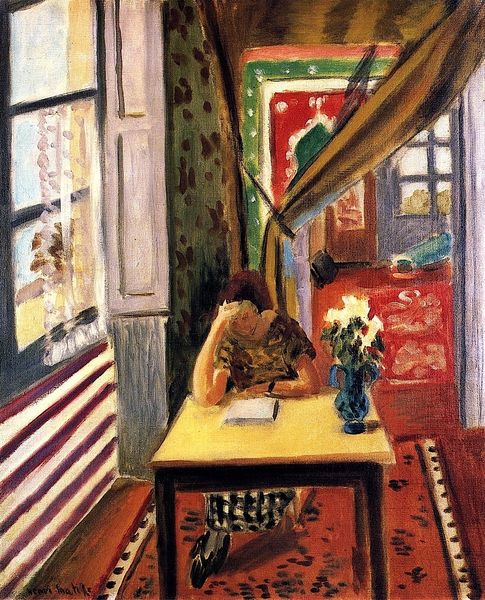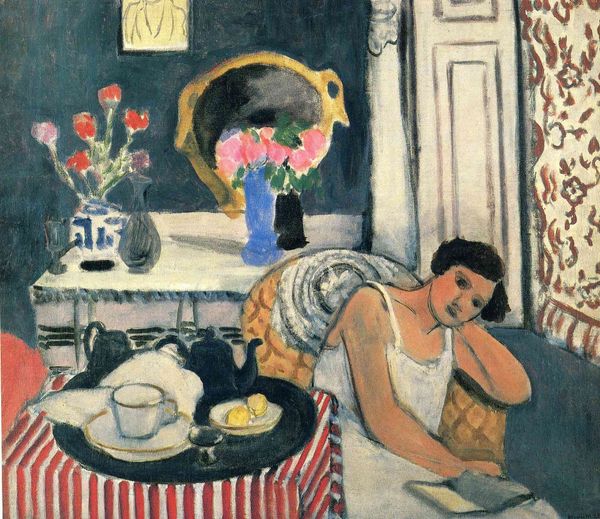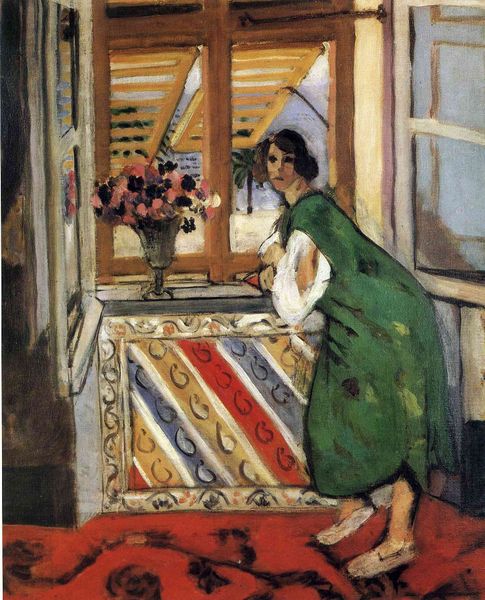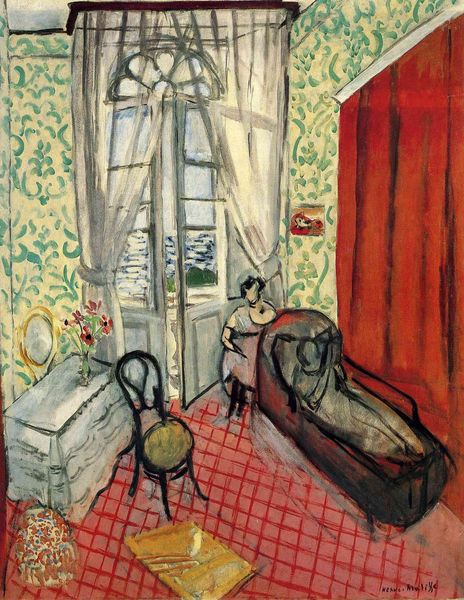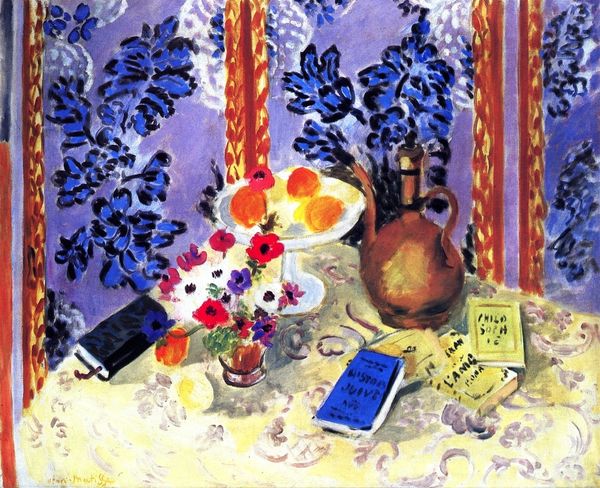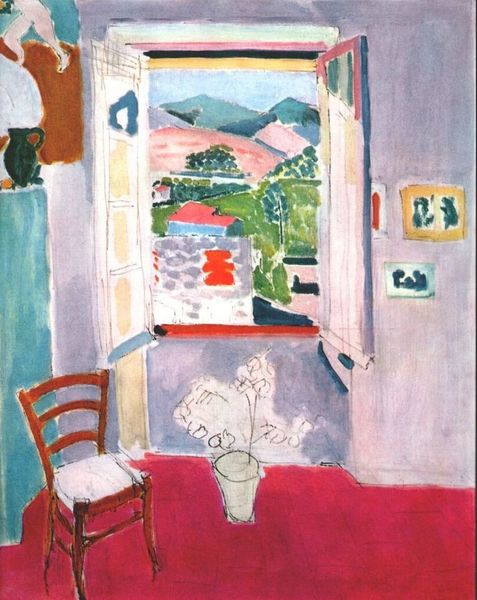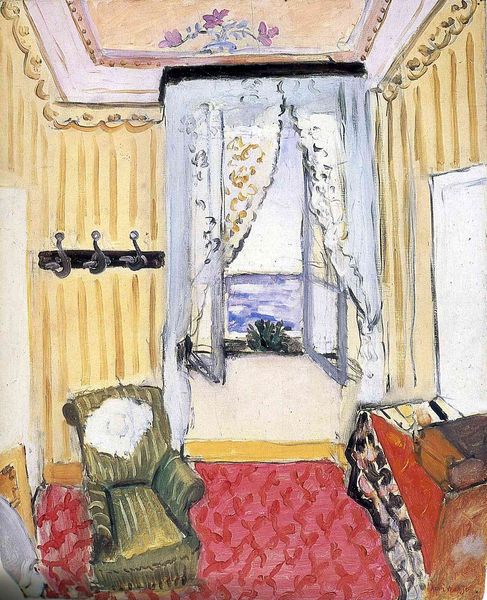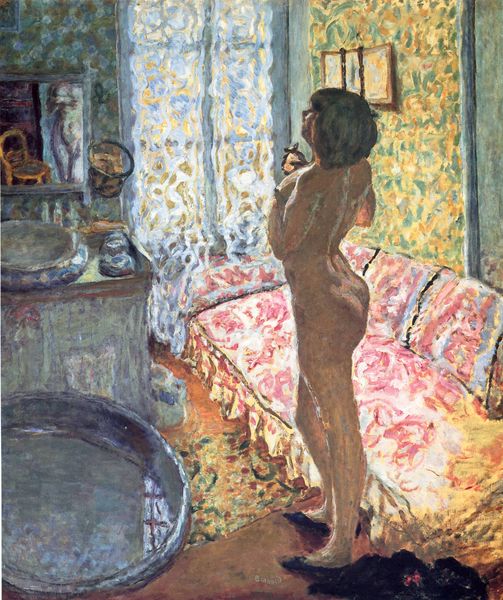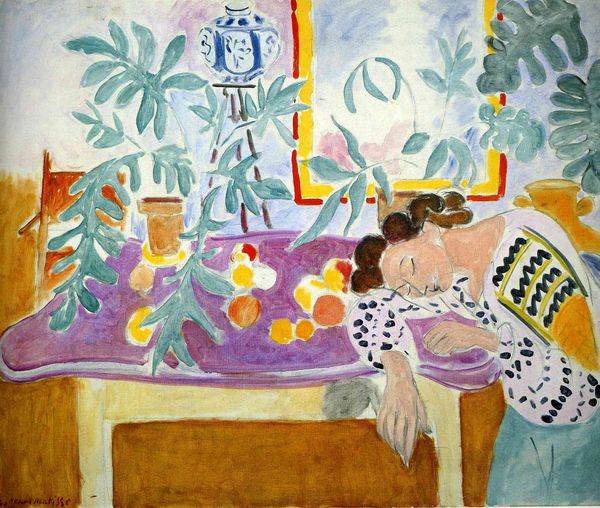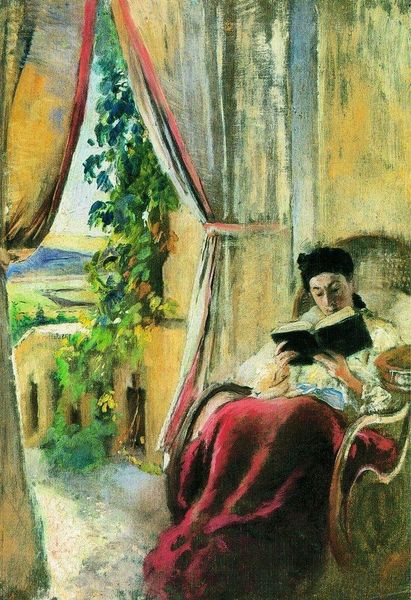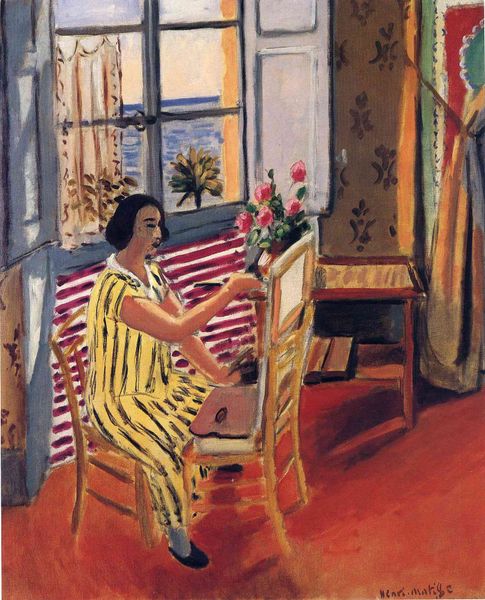
Copyright: Public domain US
Curator: Welcome to this gallery featuring Henri Matisse's work. We are now standing before "Interior in Nice, a Siesta," an oil painting from 1922. Editor: Immediately striking is the vibrant interior space, nearly bursting with patterns and color. It has a strange, almost suffocating feel, yet simultaneously offers a serene, sunny repose through the depiction of the figure in what seems like her boudoir. Curator: Indeed. Let us delve into its formal properties. Consider how Matisse orchestrates this interplay between flatness and depth. Notice the repeated motifs across surfaces—wallpaper echoing the rug, and the exterior views mediated by patterned fabrics. Editor: It feels intentional in terms of production too, doesn't it? Thinking about the context of its creation, Nice provided a haven, a retreat of sorts. One imagines Matisse painstakingly selecting these materials, creating an immersive studio environment. The materials themselves, the textiles, were perhaps sourced locally, impacting the piece. Curator: And how those selections manifest formally! The radical flattening of space contributes to a very modern aesthetic. The traditional rules of perspective are undermined as the interior merges with the exterior landscape visible through the window, all contributing to the artwork’s unified field. Editor: Right. Beyond formal elements, consider the figure. The means of production here matter: What model was present and how did Matisse translate her into pigment and line? Her passive presence directs us toward issues of spectatorship and labor involved in its creation. Her idle rest underscores leisure and access to that rest. Curator: You are keen on that angle of reception, whereas I look more to how the various colors work against and complement one another. Blue, yellow, and red dance around the space creating visual harmony, and it reflects an attempt to achieve a sense of wholeness of pictorial unity, really. Editor: I appreciate your emphasis on compositional strategy, and it cannot be dismissed here. It is hard not to think of the role of commerce, access, privilege in creating such "unified" interior scenes though, where women may occupy very passive roles in those arrangements and are displayed with particular intention. Curator: That is certainly one path to understanding. Ultimately, Matisse presents us with an intriguing exercise in chromatic orchestration and spatial manipulation within the context of modernist explorations. Editor: Yes, by focusing on material construction and what his choice of objects communicates about a cultural and class landscape that helped inspire and construct the space in the painting.
Comments
No comments
Be the first to comment and join the conversation on the ultimate creative platform.
